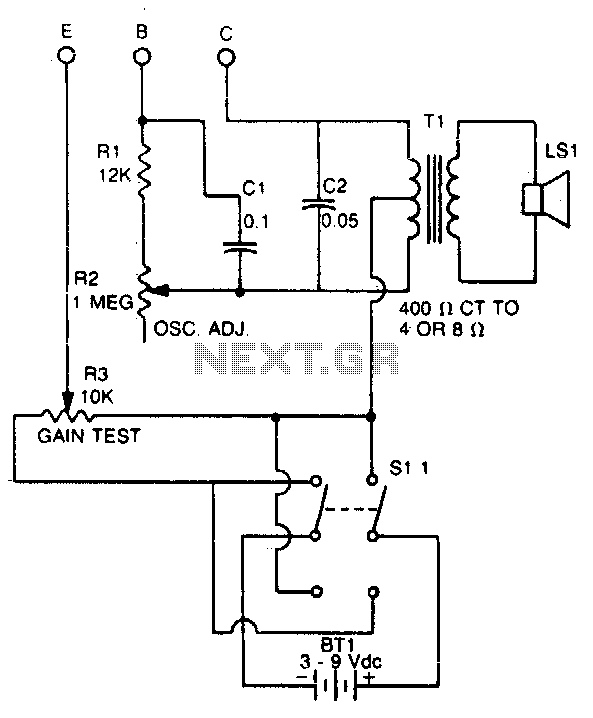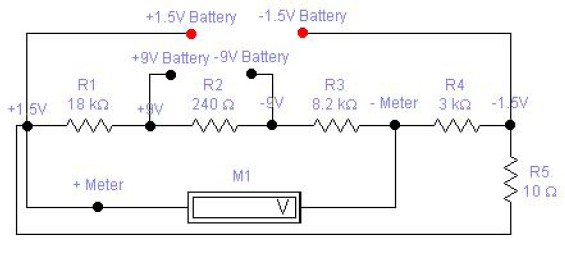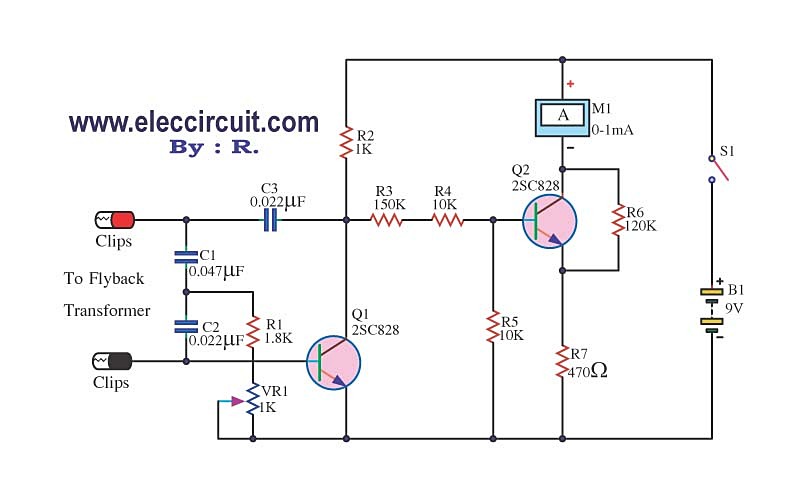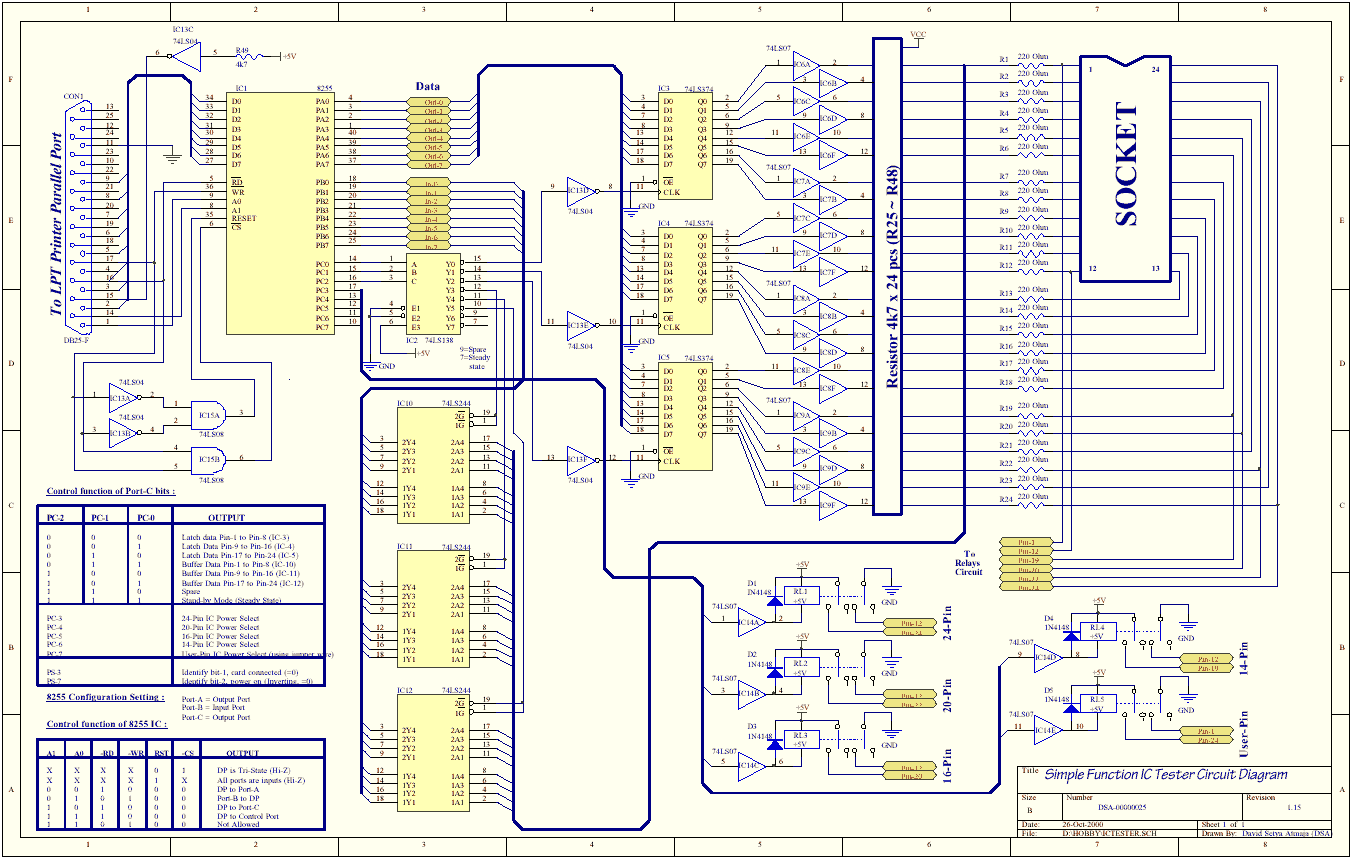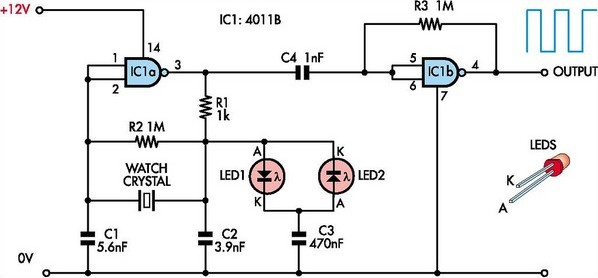
crystal tester
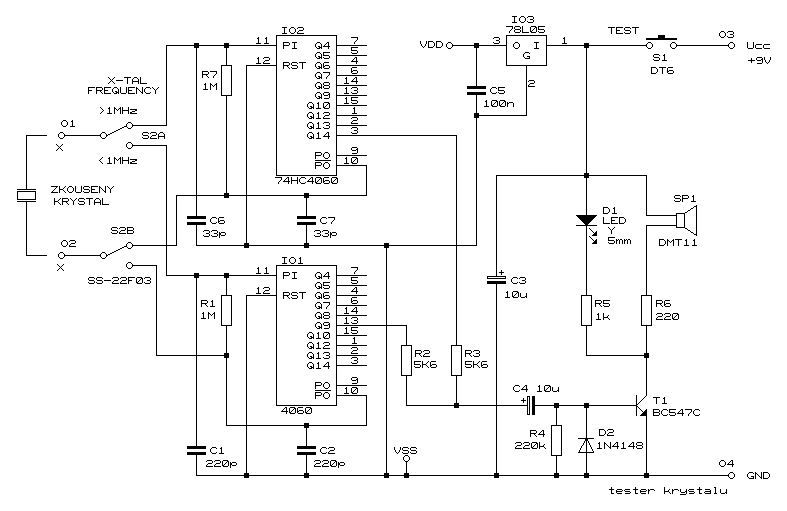
This circuit allows for the testing of quartz resonators within a frequency range of 32 kHz to 24 MHz. The operational status of the quartz resonator is indicated by a diode signaling an LED and an acoustic signal.
The circuit is designed to facilitate the evaluation of quartz resonators, which are critical components in various electronic applications, particularly in timing and frequency control. The testing process involves applying an input signal to the quartz resonator and measuring its response to determine if it operates within the specified frequency range.
Key components of the circuit include a signal generator, which produces a range of frequencies from 32 kHz to 24 MHz, and an oscillator circuit that engages the quartz resonator under test. The output of the resonator is monitored through a diode that drives an LED indicator. When the resonator is functioning correctly, the LED lights up, confirming the presence of a valid oscillation. Additionally, an acoustic signal is generated, providing an audible confirmation of the resonator's operational status.
The circuit may also incorporate a variable resistor to adjust the sensitivity of the detection circuit, allowing for the testing of resonators with varying quality factors (Q). A capacitor may be included in the design to filter out noise and stabilize the output signal, ensuring accurate readings.
Overall, this circuit serves as an invaluable tool for engineers and technicians involved in the design and maintenance of electronic systems that rely on quartz resonators. Its straightforward design and dual indication method (visual and auditory) enhance usability and efficiency in testing procedures.This circuit enables you to test quartz resonators at the range values from 32kHz to 24MHz. Confirmation of good state of quartz resonator is done by diode signalling LED and acoustic signal.. 🔗 External reference
The circuit is designed to facilitate the evaluation of quartz resonators, which are critical components in various electronic applications, particularly in timing and frequency control. The testing process involves applying an input signal to the quartz resonator and measuring its response to determine if it operates within the specified frequency range.
Key components of the circuit include a signal generator, which produces a range of frequencies from 32 kHz to 24 MHz, and an oscillator circuit that engages the quartz resonator under test. The output of the resonator is monitored through a diode that drives an LED indicator. When the resonator is functioning correctly, the LED lights up, confirming the presence of a valid oscillation. Additionally, an acoustic signal is generated, providing an audible confirmation of the resonator's operational status.
The circuit may also incorporate a variable resistor to adjust the sensitivity of the detection circuit, allowing for the testing of resonators with varying quality factors (Q). A capacitor may be included in the design to filter out noise and stabilize the output signal, ensuring accurate readings.
Overall, this circuit serves as an invaluable tool for engineers and technicians involved in the design and maintenance of electronic systems that rely on quartz resonators. Its straightforward design and dual indication method (visual and auditory) enhance usability and efficiency in testing procedures.This circuit enables you to test quartz resonators at the range values from 32kHz to 24MHz. Confirmation of good state of quartz resonator is done by diode signalling LED and acoustic signal.. 🔗 External reference

